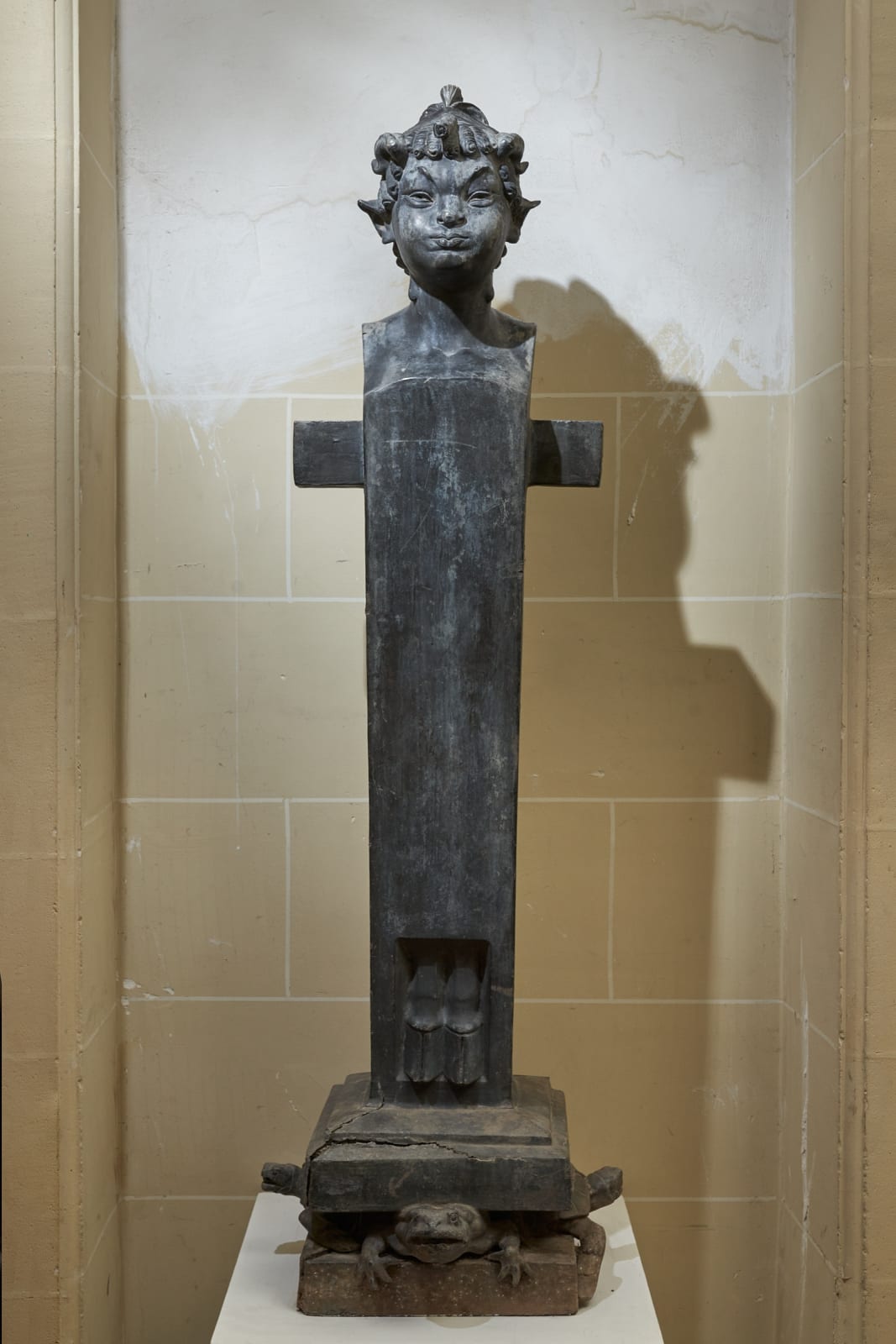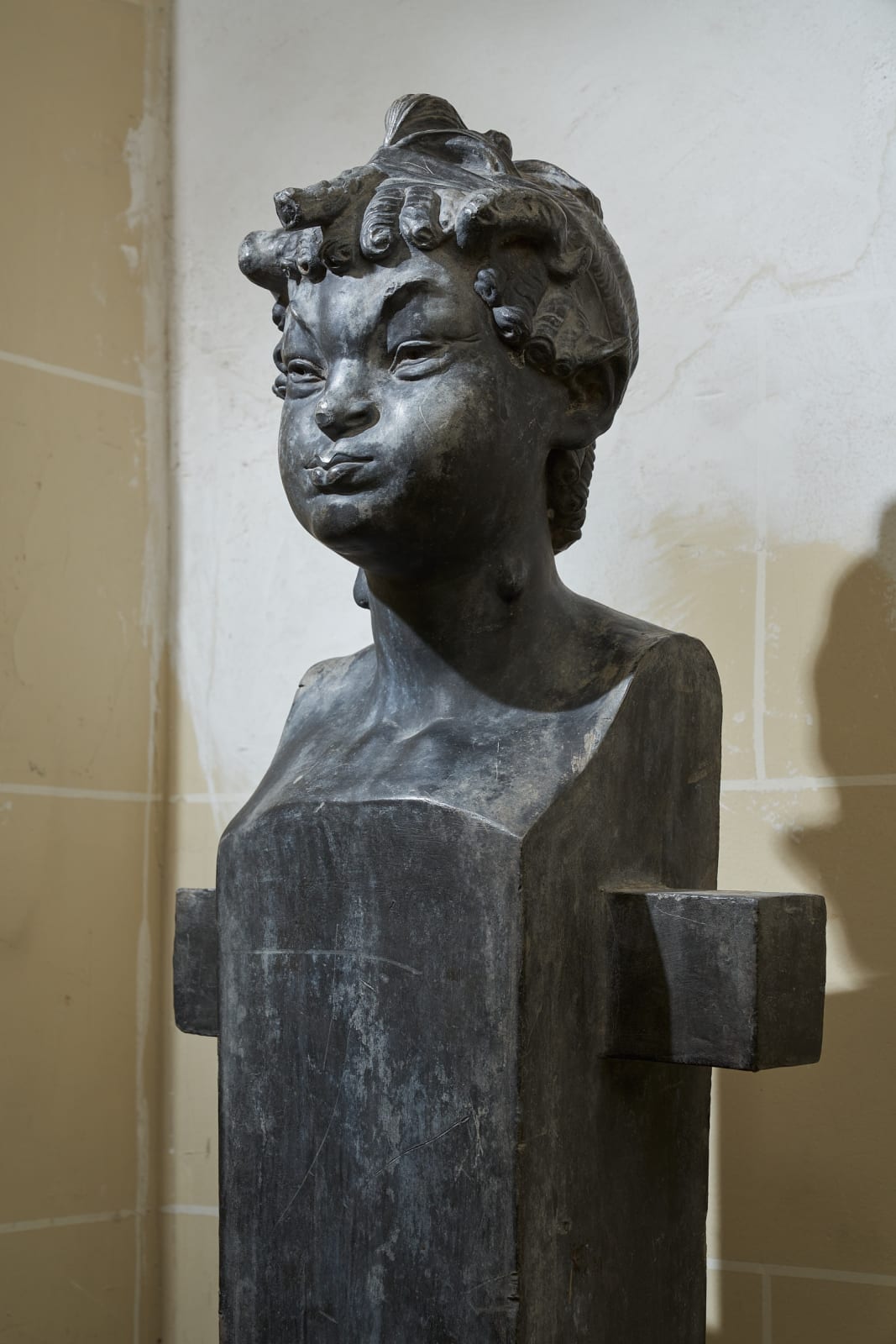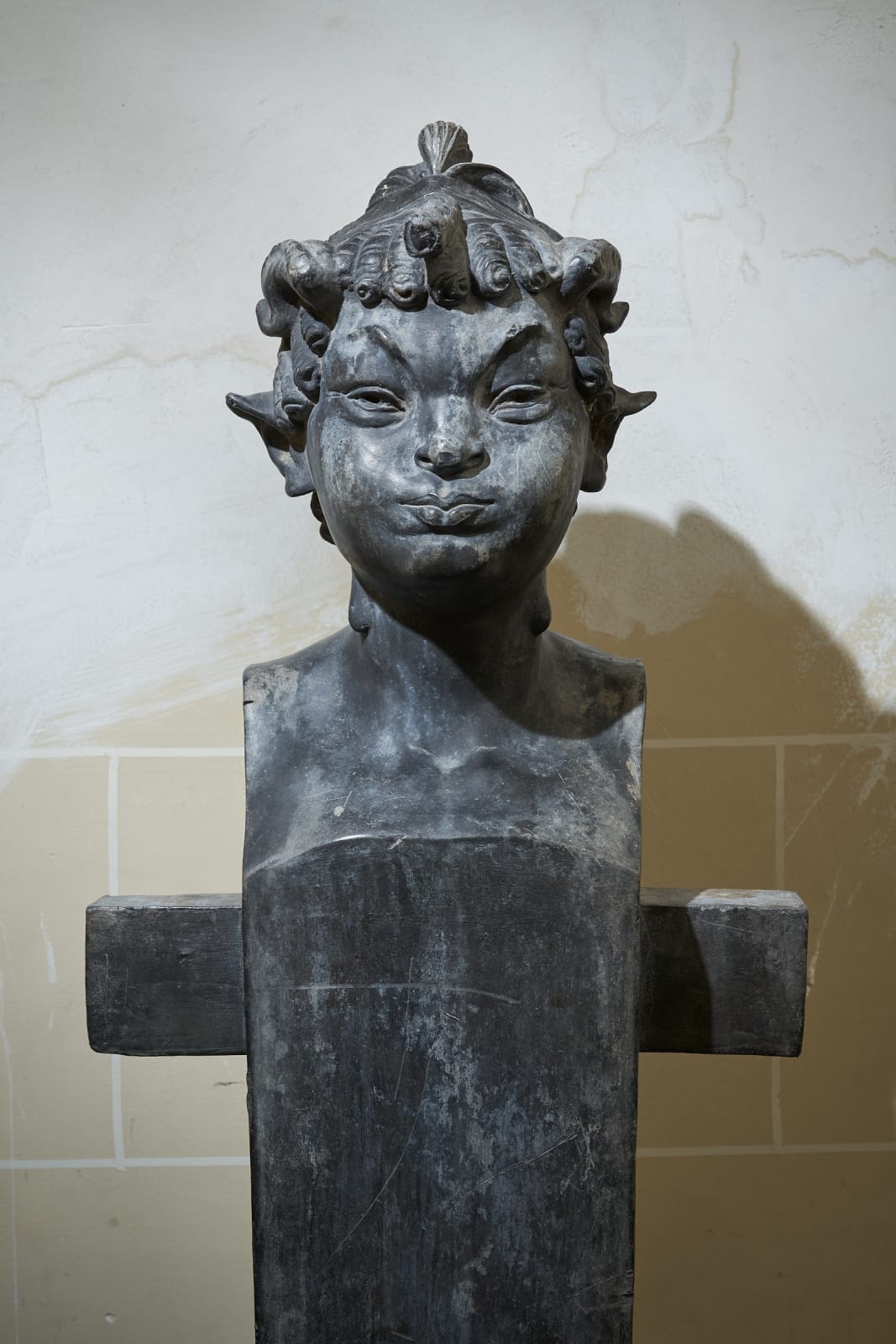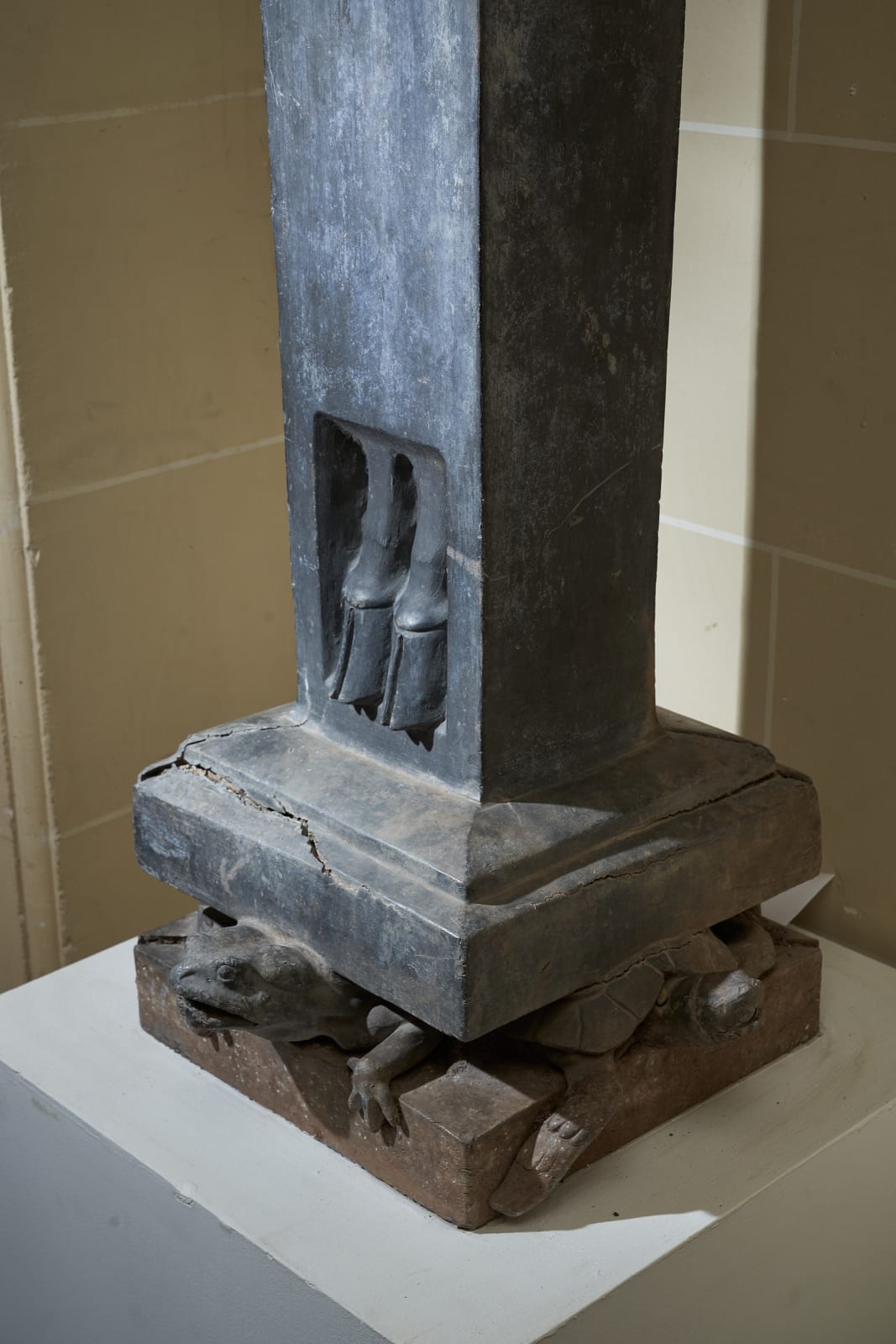Walter Gilbert
Further images
Walter Gilbert (1871-1946) was an English sculptor and father of sculptor and modeller Donald Gilbert. His educational career spanned Western Europe, India and the United States. He followed his initial training with Benjamin Creswick (1853-1946) at the Birmingham Municipal School of Art and from 1890 to 1893 at the National Art Training School (now the Royal College of Art). After these studies, he sought training all over the world: in India, the United States, Belgium, France and Germany. After a brief career as an instructor, in 1898 Gilbert co-founded the Bromsgrove Guild of Applied Arts (1898-1966), a society of modern artists and designers associated with the Arts and Crafts Movement. The guild was founded through a formal partnership between Gilbert, local landowner William Whitehouse and the architectural firm Crouch and Butler (Birmingham-based architects).
Walter Gilbert described the aims of the guild in 1903 in the journal "The Craftsman": "The members of the guild are individuals who have transcended the limits of 'professionalism' to adopt the more productive method of thinking and working in their media. Although these men and women commit to collaboration and mutual support, they have individual studios and workshops that are completely independent. Each department is separately funded and controlled by the guild leaders of the same department who train their apprentices: they choose and employ only those who are capable of developing the main idea of the master craftsman."
The Bromsgrove Guild of Applied Arts was founded on 26 November 1898. It emerged from the Bromsgrove School of Art, which moved to new premises in 1895. In February 1898, Walter Gilbert was appointed its director. The school's committee hoped that Gilbert's expertise in metalwork would attract students to this school. They also wanted "a guild of technical arts" to develop into an important commercial organisation, where skilled craftsmen could find well-paid work. It is unclear whether the idea to establish a guild came from Gilbert or was already in the thoughts of the committee.
Work on the guild began in November 1898 and a cottage and land was bought in Station Street in 1899. Gilbert also negotiated with the art school for the use of some of their rooms in the Crescent. The Guild's premises were built in 1899 by John Bowen to plans by Crouch and Butler.
In the early years of the guild, members worked from individual studios and studios in Bromsgrove, Birmingham, London, etc. It was Walter Gilbert who organised the work from the central premises on Station Street in Bromsgrove, where the main metalwork department was located.
Richard Tapp ran the wood workshop that produced furniture and later became the woodcarving workshop. This workshop was located at Moat Mill in Bromsgrove. In 1901, the guild bought equipment for making jewellery and rented an enamelling workshop in Bromsgrove where gem and fine metal work was made. The guild also established a plaster workshop at Puddle Wharf, Stoke Heath, which was run by Henry Ludlow.
George Percy Bankart joined Henry Ludlow as a partner in 1899. In 1903, the plaster workshop was expanded and an associated lead workshop was established. The lead workshop was initially located in rooms rented from the Bromsgrove School of Art and later moved to Station Street. At that time, the guild bought the shop from Ludlow and Bankart. The Bromsgrove Guild participated in the Exposition Universelle in Paris in 1900 and received nine medals.
In 1901, the metal workshop was expanded. By 1902, representatives of the guild were based in London, Glasgow, Edinburgh, Liverpool, Newcastle and the West Country. They also regularly exhibited realisations by their members in Liverpool, Leeds, Bolton, Bristol and London. In 1903, the guild participated in the Arts and Craft Society Exhibition in London, which promoted the display of decorative arts alongside fine art.
These exhibitions were important for the flourishing of the British Arts and Crafts Movement in the decades before the First World War.
In 1905, the guild was commissioned to collaborate on Aston Webb's project to make railings and gates enclosing Buckingham Palace. Guild workers designed and made the railings and the "Queen Victoria Memorial." The project was completed in 1908.
By 1905, satellite studios in Birmingham were supplying stained glass, embroidery, cartoons and painted designs. All other work, including mosaics and furniture making, were completed at Bromsgrove. A year later, Archibald John Davies established a glass studio in Bromsgrove.
On 1 July 1906, Gilbert and Whitehouse dissolved their partnership and on 9 July, William McCandlish became Gilbert's new partner.
In the 1920s, the metalwork department produced decorative pieces in a wide variety of materials (bronze, iron, lead), nameplates and plaques. The guild also offered modelling, carving and woodworking, stained glass and wall decoration. It opened branches in Belfast and New York. Towards the end of the decade, the company moved into the production of standardised goods, including: signboards, gates, railings, canopies, plaques, ecclesiastical objects, sundials, hanging light fixtures, etc.
The income of the guild suffered from the depression in the 1930s. In the last 20 years (about 1946-1966), the company was managed by George Whewell. By this time, the company had lost much of its specialist knowledge, forcing Whewell to outsource many of the guild's post-war commissions. As a result, the size of the workforce steadily decreased until only a minimal workforce remained.
After his career as director at the Guild from 1899 to August 1918, Gilbert moved on to H.H. Martyn & Co. (1888-1971) where he was assistant manager of the sculpture and architectural decoration department.
His son, Donald Gilbert, also worked as a modeller at this company. After Gilbert left the guild, Weingartner also stopped working at the Bromsgrove Guild (around 1921) and also chose H.H. Martyn & Co. The company H.H. Martyn & Co. was founded in London in 1888 by Herbert Henry Martin; a stone, marble and wood carver who specialised in headstones, memorials and church decoration. The company employed wood, stone and plaster cutters, metal and glass workers and also had workshops in Cheltenham and Birmingham. H.H. Martyn & Co. Ltd was a company with a reputation for excellence unique for the time and a wide range of operations. Father Walter and son Donald worked together on many projects. Walter Gilbert retired in 1940 and died six years later on 23 January in Littlehampton, Sussex. Hanbury church St Mary the Virgin in Worcestershire preserves the memorial "Donald Gilbert" made in memory of his father and Weingartner.
A lengthy list of Walter Gilbert's works can be found on the internet (cf literature references) and includes those realised by Gilbert himself and those made in collaboration with other artists, such as Louis Weingartner with the Bromsgrove Guild and H. H. Martyn & Co (Ltd) and with his son Donald Gilbert and H. H. Martyn & Co (Ltd).
In1927, the "February issue of Architectural Review" featured Gilbert’s and Weingartner’s lead sculpture of a "Fawn" (1928) and "Leveret" sculptures in an article on "The garden of Mr F. Tillotson" (Hillside, Heaton, Lancashire). This lead garden sculpture of a young fawn seated on a square base, holding a set of windpipes with one finger raised, was signed in the cast W.G Scs. L.W. '28'. Other works of their garden statuary can be seen in Gilbert’s and Weingartner's "Sculpture in the Garden."







